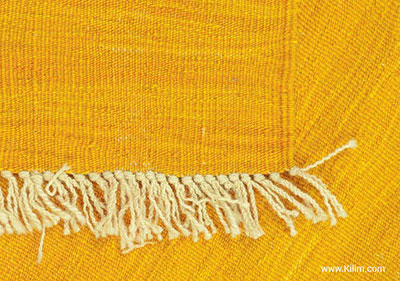what is kilim

Kilim, a word of Turkish origin, denotes a pileless textile of many uses produced by one of several flatweaving techniques that have a common or closely related heritage and are practiced in the geographical area that includes parts of Turkey (Anatolia and Thrace), North Africa, the Balkans, the Caucasus, Iran, Afghanistan, Pakistan, Central Asia and China.
Although at times you may find kilim rugs included in the general genre of “oriental rugs”, in more accepted practice kilims are in a class of their own.
The major difference between a kilim area rug and a carpet or a pile rug is that whereas the design visible on a pile rugs is made by individual short strands of different color being knotted onto the warps and held together by pressing the wefts tightly, kilim designs are made by interweaving the variously colored wefts and warps, thus creating what is known as a flatweave.
Kilims are generally woven with the slitweave technique. The slit refers to the gap left between two blocks of color. It is created by returning the weft around the last warp in a color area, and the weft of the adjacent color is later returned around the adjacent warp.
Weavers pack the weft tightly to completely cover the warp and often favor diagonal patterns so as to avoid weakening the structure of the rug with vertical slits. It produces bold, sharp patterns that weavers enjoy creating with more freedom allowed than a plainweave. This is also why kilims are so closely associated with geometrical designs even though there are are kilims with floral designs as well.







